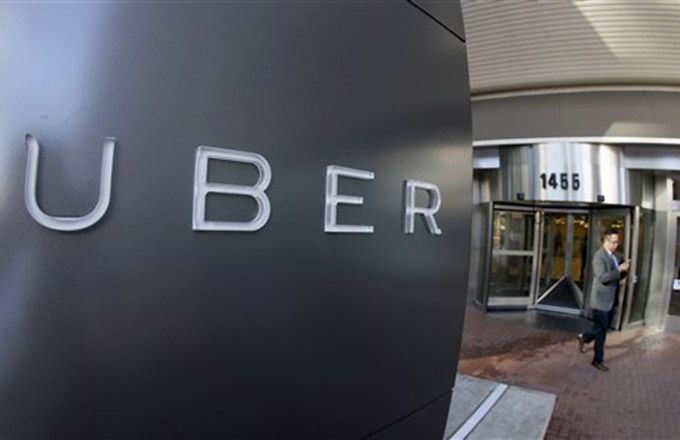[ad_1]
Major Moves
Wall Street has seen some highly anticipated initial public offerings (IPOs) roll out so far in 2019. Here is a list of a few the big ones, their IPO price and their open price:
- Pinterest, Inc. (PINS) – IPO price: $19 – Open price: $23.75
- Lyft, Inc. (LYFT) – IPO price: $72 – Open price: $87.24
- Levi Strauss & Co. (LEVI) – IPO price: $17 – Open price: $22.22
- Zoom Video Communications, Inc. (ZM) – IPO price: $36 – Open price: $65.00
What do you notice about each of those IPOs? The open price is higher than the IPO price in every example.
This is how it is supposed to work. The investment banks are supposed to help the company get as much as possible for the IPO without overpricing the IPO. That way, the company gets the money it deserves and the investors feel like they’ve made a good decision, which draws more investors into the stock.
(Side note… Zoom’s investment bankers did an awful job of this. They left nearly half of what Zoom could have raised with its IPO on the table.)
Plus, an open price above the IPO price signals that Wall Street has confidence in the future earnings potential of the company.
That’s why today’s price action on Uber Technologies, Inc.’s (UBER) IPO is so disappointing. Uber’s IPO price was $45. Unfortunately, when the opening bell rang, Uber shares opened at $42. As you can see on the five-minute chart below, Uber stock jumped up to $45 briefly within the first five minutes of trading, but then it dropped to an intra-day low of $41.06 in the next five minutes. Ultimately, after swinging back and forth throughout the trading day, Uber closed at $41.57.
This is an embarrassing debut for Uber. Many are likely to point to the volatile circumstances in the market in general at the opening bell due to the tariff hike that went into effect this morning, but that doesn’t explain why Uber wasn’t able to rebound the way the S&P 500 did by the closing bell.
S&P 500
The S&P 500 surprised many today by rallying during the second half of the trading day, not only coming up off its intra-day lows but also closing at a higher level than it opened. The index closed the day at 2,881.63, which is higher than the S&P 500 closed on either Wednesday or Thursday.
Today’s price movement has certainly confirmed that traders are comfortable with the current longer-term uptrend of the U.S. stock market. It also confirmed that the resistance level at 2,816.94 that kept the S&P 500 down from mid-October 2018 through early March is now acting as a solid support level.
We see this phenomenon in technical analysis all the time. Former resistance becomes new support during uptrends, and former support becomes new resistance during downtrends. We will have to wait until next week to know whether earnings season is going to remain bullish and the S&P 500 is going to resume its uptrend, but seeing support hold today is an excellent first step.
Risk Indicators – VIX
Wall Street is a funny place sometimes. All week long, analysts – yours truly included – have been discussing the potential risks and reactions that could come from the Trump administration moving forward with its tariff increase. And now that the day has arrived and the tariffs on $200 billion of Chinese goods have indeed jumped from 10% to 25%, the S&P 500 has given its answer. It held at support.
However, if you look at the CBOE Volatility Index (VIX), you see a much more bullish picture. The VIX dropped back down below 18 today to close at 16. This signals that traders are no longer worried about an imminent pullback on the S&P 500. At the same time, it is important to note that the VIX hasn’t dropped low enough to signal that traders believe the bullish trend is immediately going to start soaring higher either. It is simply confirming the support we are seeing on the stock index.
Today’s movement on the VIX is an excellent example of the idea that the only thing Wall Street hates is uncertainty. Give traders on Wall Street good or bad news, and they will make informed decisions in their portfolios. Tell traders on Wall Street that you have no news for them and that they’re going to have to guess at what happens next, and they will hem and haw while they hedge their portfolios.
Even though most traders didn’t want to see the tariff increase go through today, now that it has, traders can take whatever steps they deem appropriate in their portfolios. They no longer have to hedge against the unknown.
The Bottom Line – Full of Surprises
Wall Street was full of surprises today. Had you told analysts that the tariff hike was a sure thing before the market opened and that UBER was having its IPO today, the majority of them would have predicted that the S&P 500 was going to sell off and that Uber was going to jump well above its IPO price.
Neither of those things happened today. Sometimes you just have to take what the market gives you, even if it isn’t what you expected to happen.
Enjoy this article? Get more by signing up for the Chart Advisor newsletter.
[ad_2]
Source link Google News

